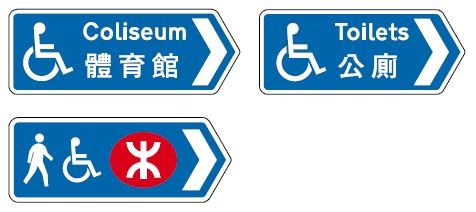
Mobility impaired persons
Wheelchairs (manually or electrically propelled) and crutches are the most common walking aids for mobility impaired persons to travel around. Many facilities are provided on roads, such as pavements and road crossing places, for mobility impaired persons, in particular those using wheelchairs. Most of the rules and advice given to pedestrians also apply to mobility impaired persons using walking aids.
Barrier-free access facilities, like lifts, ramps and dropped kerbs, are provided to help you use the footbridges and subways to cross roads, and access premises and community facilities comfortably and safely. Use ramps or lifts provided at footbridges or subways. Some direction signs may help you locate the barrier-free access and nearby public facilities.
 |
An international symbol of accessibility may appear on pedestrian direction signs to indicate facilities or routes for mobility impaired persons.
If using a wheelchair, you should take note of the following advice:
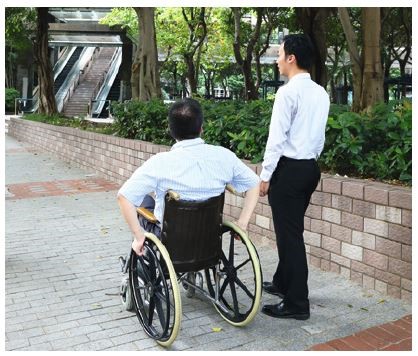 When travelling on pavements, you should be considerate towards other road users and use the wheelchair attentively to avoid causing any nuisance, inconvenience or danger to them. You should move at a reasonable speed which at most should be comparable with that of the moving crowd around you. Look out for the road environment and the people moving around you, in particular the sudden movement of young children or the slow movement of the elderly.
When travelling on pavements, you should be considerate towards other road users and use the wheelchair attentively to avoid causing any nuisance, inconvenience or danger to them. You should move at a reasonable speed which at most should be comparable with that of the moving crowd around you. Look out for the road environment and the people moving around you, in particular the sudden movement of young children or the slow movement of the elderly. |
Visually impaired persons
The following facilities are provided to help visually impaired persons in travelling around:
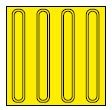 |
Directional tile with parallel raised bars is used to guide users along an intended safe path. |
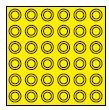 |
Hazard warning tile with raised big dots (35mm in diameter) is used to give warning to users of potential hazards ahead, for example at road crossing place or beginning/end of staircase/ramp/escalator. |
 |
Positional tile with raised small dots (23mm in diameter) is used to indicate possible change in walking directions, for example at junctions. |
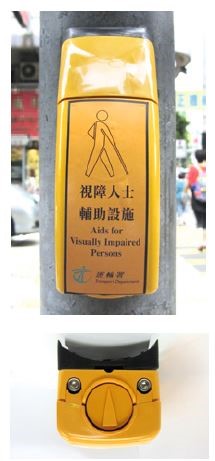 |
| Vibrator and directional arrow at the bottom |
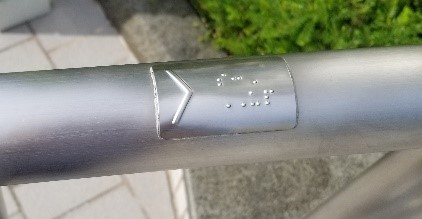 |